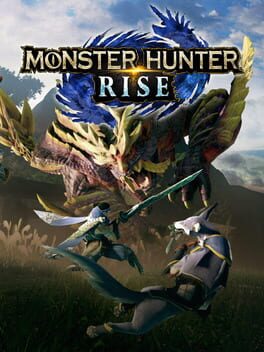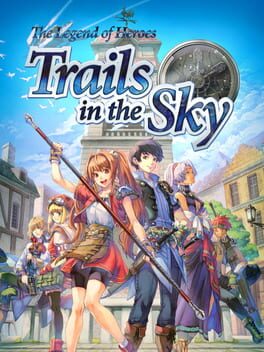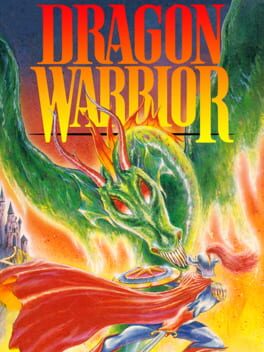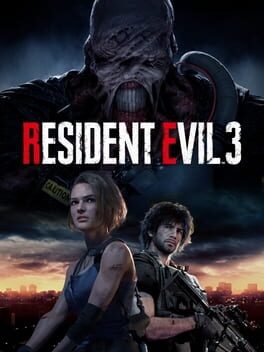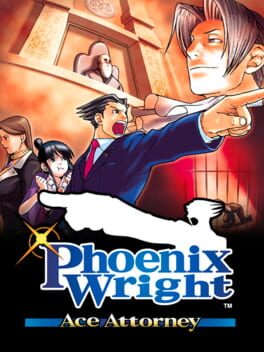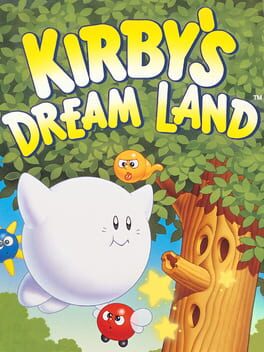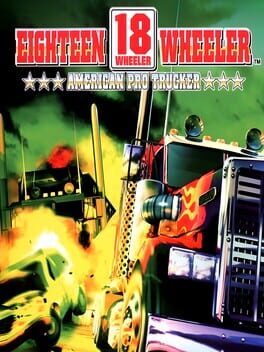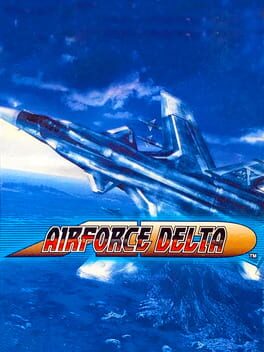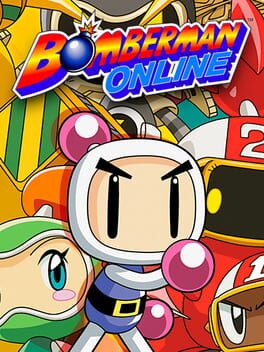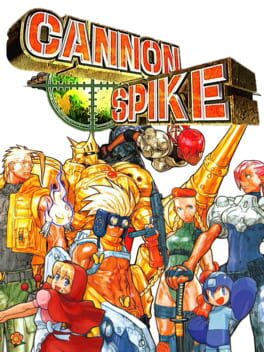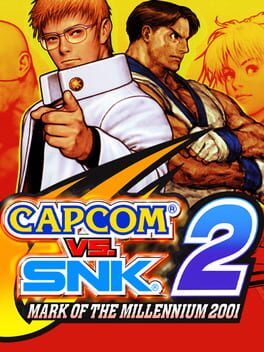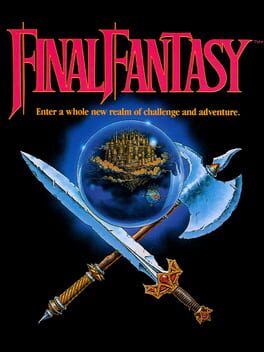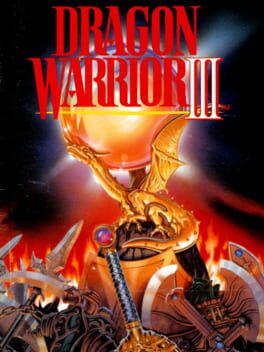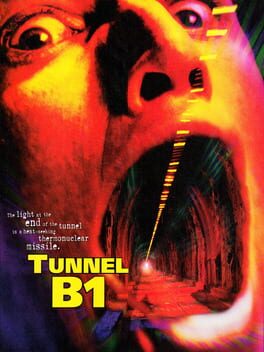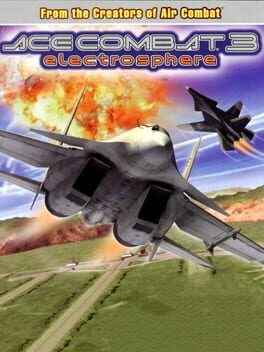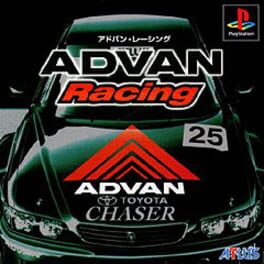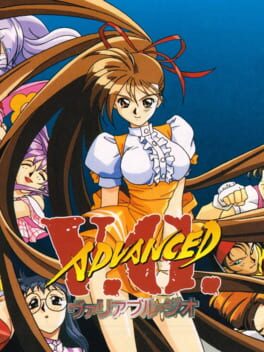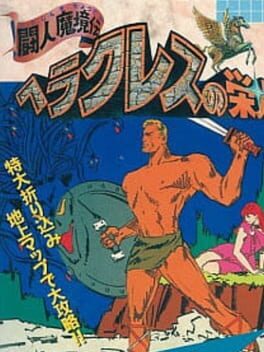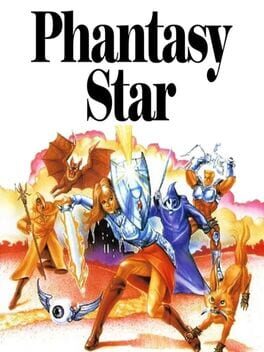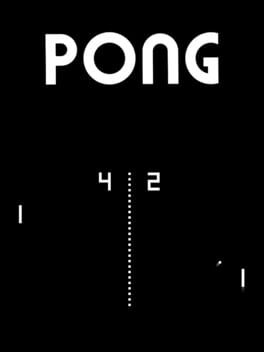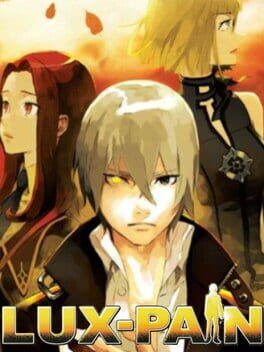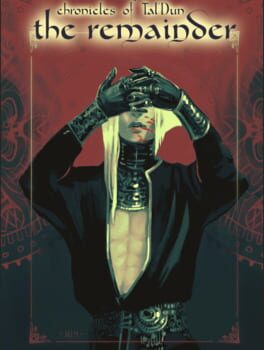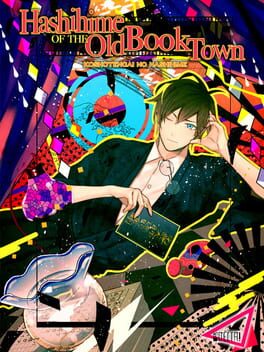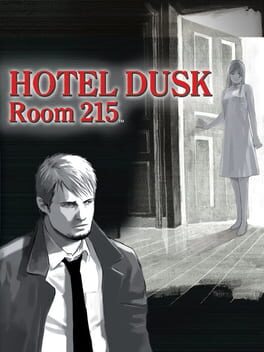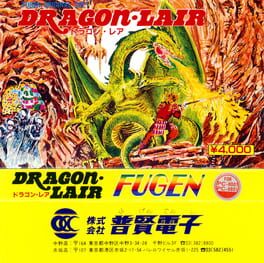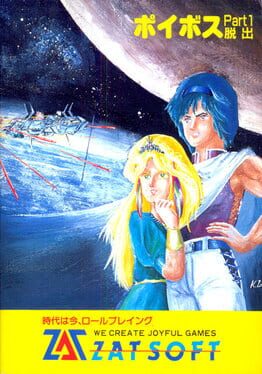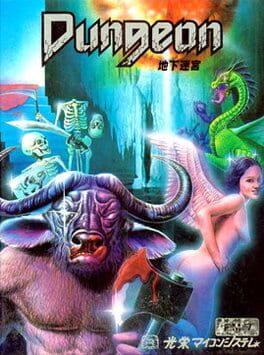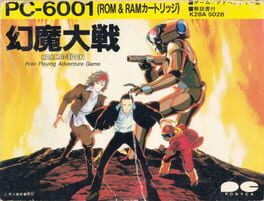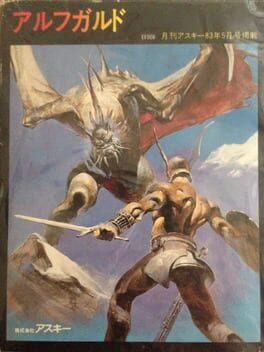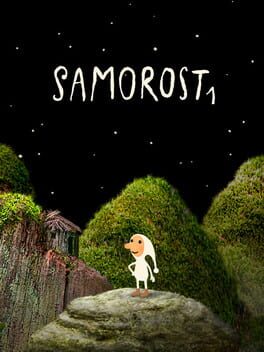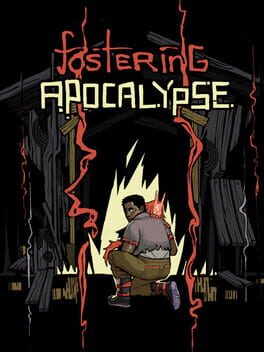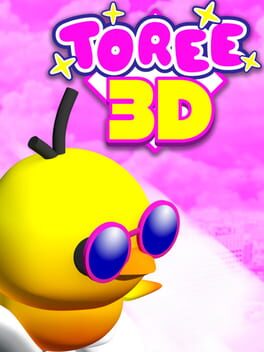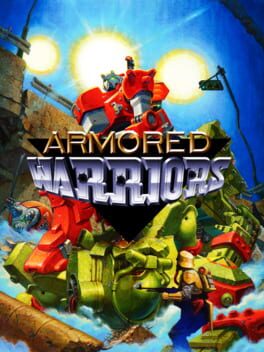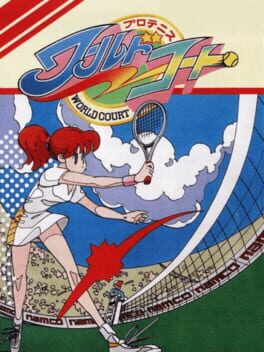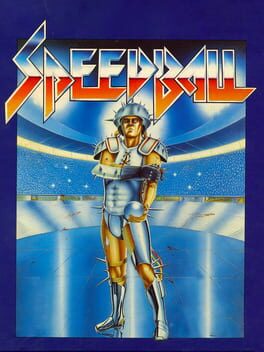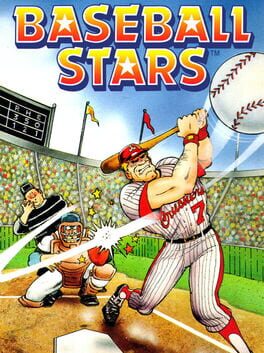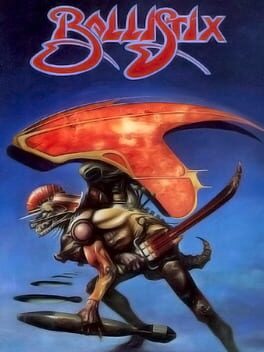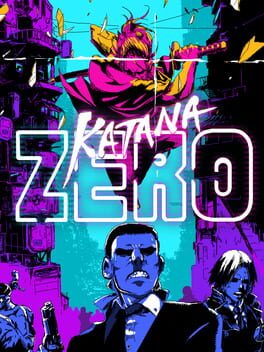ChaceGraves
56 reviews liked by ChaceGraves
Incredible slavic atmosphere of desolation and hopelesness, a super janky yet somehow fully functional post nuclear disaster action horror where a mutant attacking from the shadows will freeze your blood in terror. Also the last couple of stages are so miserable and awful, they'll make you not touch this game again for at least five years after you finish it.
Portal
2007
So back when reviewing Aperture Desk Job for the steamdeck some people were surprised it was the first Valve game I had played. The thing is that I stopped PC gaming in the mid 90's and have always been a console gamer either through finances or where friends played but getting a steamdeck and joining steam's eco system really opened my eyes quite a bit. I even bought a gaming PC and have been venturing into it steadily. I still love my consoles and retro gaming but having more avenues to experience titles in different ways is never a bad thing.
With that in mind and the Aperture Desk Job link to Portal I figured I should finally play this well know piece of gaming history I have a blank on. Now I'm not really a puzzle gamer. I dabble in a few here and there but it's just not really to my tastes as I get impatient if that is all I am doing. Portal feels like it has a great balance of puzzles being both overly simple and challenging at the same time. I never felt I was breezing through but rarely felt stuck, at the minimum I could see what I needed to do even if occasionally pulling it off wasn't so easy.
Portal's gameplay is in it's very name. You create portals using a gun whilst going through test areas in the Aperture Science Enrichment Centre. Each area has different puzzles and sometimes multiple rooms to figure out to get to the elevator to the next area. It's a linear game and though your mechanics are limited to creating two portals that link and picking up boxes it's impressive how far Valve manages to inspire you to use them in different ways. Creating paths for energy balls to power up doors, getting into seemingly locked off rooms and my favourite, using multiple portals to get the velocity to launch yourself, or as GLaDOS your Aperture computer guide states:
"speedy thing goes in, speedy thing comes out"
Now if the game was just the puzzles I'd be a little luke warm about it being just kind of ok but the writing and voice acting do a lot of heavy lifting to pull Portal up to something more I feel. The only real voiced character is GLaDOS but her sarcasm, dry tone and implications as the game progresses are really witty and entertaining. Without her this would be a decent puzzle game but with her it's a great overall experience.
Glad I finally played it and have been dabbling with some of the extras like the advanced maps and challenges. The game is pretty short which to me is not a negative here. It's a game that knows not to wear out it's welcome while keeping things entertaining and I look forward to playing it's much lauded sequel sometime in the future.
Recommended.
+ Puzzles are balanced well.
+ GLaDOS is often hilarious and keeps the game from getting stale as you progress.
+ Just the right length.
With that in mind and the Aperture Desk Job link to Portal I figured I should finally play this well know piece of gaming history I have a blank on. Now I'm not really a puzzle gamer. I dabble in a few here and there but it's just not really to my tastes as I get impatient if that is all I am doing. Portal feels like it has a great balance of puzzles being both overly simple and challenging at the same time. I never felt I was breezing through but rarely felt stuck, at the minimum I could see what I needed to do even if occasionally pulling it off wasn't so easy.
Portal's gameplay is in it's very name. You create portals using a gun whilst going through test areas in the Aperture Science Enrichment Centre. Each area has different puzzles and sometimes multiple rooms to figure out to get to the elevator to the next area. It's a linear game and though your mechanics are limited to creating two portals that link and picking up boxes it's impressive how far Valve manages to inspire you to use them in different ways. Creating paths for energy balls to power up doors, getting into seemingly locked off rooms and my favourite, using multiple portals to get the velocity to launch yourself, or as GLaDOS your Aperture computer guide states:
"speedy thing goes in, speedy thing comes out"
Now if the game was just the puzzles I'd be a little luke warm about it being just kind of ok but the writing and voice acting do a lot of heavy lifting to pull Portal up to something more I feel. The only real voiced character is GLaDOS but her sarcasm, dry tone and implications as the game progresses are really witty and entertaining. Without her this would be a decent puzzle game but with her it's a great overall experience.
Glad I finally played it and have been dabbling with some of the extras like the advanced maps and challenges. The game is pretty short which to me is not a negative here. It's a game that knows not to wear out it's welcome while keeping things entertaining and I look forward to playing it's much lauded sequel sometime in the future.
Recommended.
+ Puzzles are balanced well.
+ GLaDOS is often hilarious and keeps the game from getting stale as you progress.
+ Just the right length.
Monster Hunter Rise
2021
Sat at the mouth of a serene underground river flowing far into the surrounding bioluminescent cave system, I aim my camera upwards towards a craggy volcanic plateau atop which two Wroggi sleep and a third keeps watch. I’m far enough away that the one watchful sentinel doesn’t see me slowly line up my shot and snap a few photos for research purposes — no need for the rule of thirds or precise framing here. One hour into my solo excursion and I finally feel like I have an idea of the topography here, the ways in which my companions and I can weave effortlessly in and out of the twisting and expansive natural tunnels in the heat of battle, and the places in which we can replenish our stock of items in a pinch. For the moment, at least, the area is calm. The sound of running water and the soft reptilian purr of sleeping Wroggi are only punctuated by the infrequent shifting and splashing of my canine companion in the river. When I return from my tranquil expedition I’m greeted joyfully by the denizens of the village, each with a request for materials that can be used to offer increasingly impressive services to myself and others.
Surrounded by three of my closest friends, things are not going according to plan. Magnamalo, a hulking tiger-like creature sporting purple-plated armor for skin, is making quick work of the four of us as its frenzied blows come faster than we can react. With every slow swing of our comically large weapons, the monster manages to dodge swiftly and retaliate with the swipe of its claws or purple hellfire from its jaws. Standing again at the mouth of an underground river beneath a craggy volcanic plateau, I shout to my companions that grappling upward and outward to heal our wounds and hope Magnamalo doesn’t follow is our best bet at survival — which is becoming more important than victory at this point. Before we zip into the sky, one brilliant mind among us takes the opportunity to throw a flash bomb at the beast, ensuring it won’t be able to see our escape plan as we clamber to safety. Atop the plateau, we eat steaks and drink health potions and sharpen our weapons and continue laughing the whole way through. Within the hour Magnamalo has fallen, and we all sign off until tomorrow’s hunts begin.
In my free time I find myself chatting with the residents scattered around the village of Kamura, taking care to learn more about them as people instead of as walking-talking vending machines. Yomogi, a young chef who runs the village tea shop, sees her constant menu expansion as an expression of artistry and the best way to serve her community. Iori spends his days surrounded by felynes and palamutes, and by using his unique gifts can help them grow in strength and resourcefulness. Both separately express to me their desire to do something more overtly cool, like becoming a monster hunter, but by utilizing and honing their talents they’re able to impact Kamura as much as, if not more than I ever could.
Monster Hunter has never been known for its story, despite the series’ multiple attempts to put narrative first. At best, entries have been innocuous to the point of forgettable, and at worst the franchise has a tendency to play into troubling colonialist attitudes dressed up with a fantastical albeit ignorant sheen. Rise though, more than any other entry, smartly focuses on the hub village itself as its emotional core. By endearing me to the place in which I find myself safe and at rest, I care more deeply when that safety is threatened by outside forces. I would never let anything bad happen to Yogomi or Iori or the many other faces of Kamura. For the first time in its seventeen years, Monster Hunter smartly centered every piece of its gameplay around the betterment of the community — both human players and NPC alike.
That focus bleeds into every decision and mechanic on the multiplayer end, where my time spent sitting at a table eating dango and talking with my friends can feel as fun as the hunts we’re ostensibly preparing for. In 2021, Monster Hunter Rise was my continued link to socialization in the ongoing pandemic-addled world. Just like Animal Crossing: New Horizons before it, Rise represented an on-ramp to the franchise for many of the people I hold dear. Although I always hoped Animal Crossing would realize its potential to catch on with mainstream audiences, I never imagined a world where Monster Hunter broke out of its “hardcore” shell. I recognize this wasn’t the norm in 2021 the way New Horizons was for just about everyone in 2020, but to see so many willingly toss themselves headlong into a title known for its complex mechanics and opaque design was a joy. As with most things, to be able to teach your friends how to play Monster Hunter is a dream come true.
But writing this in 2022, Kamura is less vibrant than it once was. Life in its natural state is a series of ebbs and flows, and the friends I once found myself surrounded by have since moved onto other adventures. Every once in a while, the most die-hard Monster Hunter fans among us will jump in for a hunt and a chat, but it’s nowhere near the nightly ritualistic experience we’d all briefly had at launch. Still though, I’m happy to knock out a hunt or two with my buddies when the timing is right. Every moment spent together, virtually or otherwise is a moment to be cherished. To spend so much time in a place as beautiful as Kamura is a privilege, and sharing that time with others is the best experience I had playing a video game in 2021.
Surrounded by three of my closest friends, things are not going according to plan. Magnamalo, a hulking tiger-like creature sporting purple-plated armor for skin, is making quick work of the four of us as its frenzied blows come faster than we can react. With every slow swing of our comically large weapons, the monster manages to dodge swiftly and retaliate with the swipe of its claws or purple hellfire from its jaws. Standing again at the mouth of an underground river beneath a craggy volcanic plateau, I shout to my companions that grappling upward and outward to heal our wounds and hope Magnamalo doesn’t follow is our best bet at survival — which is becoming more important than victory at this point. Before we zip into the sky, one brilliant mind among us takes the opportunity to throw a flash bomb at the beast, ensuring it won’t be able to see our escape plan as we clamber to safety. Atop the plateau, we eat steaks and drink health potions and sharpen our weapons and continue laughing the whole way through. Within the hour Magnamalo has fallen, and we all sign off until tomorrow’s hunts begin.
In my free time I find myself chatting with the residents scattered around the village of Kamura, taking care to learn more about them as people instead of as walking-talking vending machines. Yomogi, a young chef who runs the village tea shop, sees her constant menu expansion as an expression of artistry and the best way to serve her community. Iori spends his days surrounded by felynes and palamutes, and by using his unique gifts can help them grow in strength and resourcefulness. Both separately express to me their desire to do something more overtly cool, like becoming a monster hunter, but by utilizing and honing their talents they’re able to impact Kamura as much as, if not more than I ever could.
Monster Hunter has never been known for its story, despite the series’ multiple attempts to put narrative first. At best, entries have been innocuous to the point of forgettable, and at worst the franchise has a tendency to play into troubling colonialist attitudes dressed up with a fantastical albeit ignorant sheen. Rise though, more than any other entry, smartly focuses on the hub village itself as its emotional core. By endearing me to the place in which I find myself safe and at rest, I care more deeply when that safety is threatened by outside forces. I would never let anything bad happen to Yogomi or Iori or the many other faces of Kamura. For the first time in its seventeen years, Monster Hunter smartly centered every piece of its gameplay around the betterment of the community — both human players and NPC alike.
That focus bleeds into every decision and mechanic on the multiplayer end, where my time spent sitting at a table eating dango and talking with my friends can feel as fun as the hunts we’re ostensibly preparing for. In 2021, Monster Hunter Rise was my continued link to socialization in the ongoing pandemic-addled world. Just like Animal Crossing: New Horizons before it, Rise represented an on-ramp to the franchise for many of the people I hold dear. Although I always hoped Animal Crossing would realize its potential to catch on with mainstream audiences, I never imagined a world where Monster Hunter broke out of its “hardcore” shell. I recognize this wasn’t the norm in 2021 the way New Horizons was for just about everyone in 2020, but to see so many willingly toss themselves headlong into a title known for its complex mechanics and opaque design was a joy. As with most things, to be able to teach your friends how to play Monster Hunter is a dream come true.
But writing this in 2022, Kamura is less vibrant than it once was. Life in its natural state is a series of ebbs and flows, and the friends I once found myself surrounded by have since moved onto other adventures. Every once in a while, the most die-hard Monster Hunter fans among us will jump in for a hunt and a chat, but it’s nowhere near the nightly ritualistic experience we’d all briefly had at launch. Still though, I’m happy to knock out a hunt or two with my buddies when the timing is right. Every moment spent together, virtually or otherwise is a moment to be cherished. To spend so much time in a place as beautiful as Kamura is a privilege, and sharing that time with others is the best experience I had playing a video game in 2021.
This review contains spoilers
It was the summer of 2020, it was in the middle of the pandemic, and I see a game on sale on the steam store titled 'The Legend of Heroes: Trails of Cold Steel III'. Yeah, not what you were expecting me to say, but let me tell you, when I first saw the gameplay and trailer for that game, I think that's when I became a trails degenerate and decided to go to the beginning of the series, with Trails in the Sky.
Honestly, I don't even know where to begin. The main thing that got me hooked into the series was the wordbuilding of Zemuria, I just thought of it as being so sick and cool and I needed more.
The beginning of the game was pretty slow and chill, sure, but I loved it. I'm also used to these types of games so that didn't really kill it for me. Estelle and Joshua bounce off of each other so well that I started to fall in love with them as a duo, Joshua especially. I could tell they were going to plot something with Joshua, just wasn't sure what it was going to evolve into. The rest of the cast is also pretty cool, with the main highlight in my opinion being Olivier. You can't top Olivier in terms of personality I'm afraid. As far as I'm concerned, HE'S PEAK!
The battle system also drew me in and probably became one of my most favourite battle systems ever. Idk there's just something that hits different about being able to interrupt the turn order and steal bonuses, guess it's just a rush. I love the orbment system and the different types of arts you could cast with the different quartz setups.
Regarding the plot, it felt like we were going on an adventure around Liberl (well that's what it was literally so I guess they hit another bullseye). I enjoyed how after every chapter we would rotate characters and be introduced to new ones. The chemistry between some of the party members was amazing. You got Estelle and Scherazard, Estelle and Agate, Estelle and Joshua, Estelle and Tita, honestly Estelle just bounces off of everyone really well. The party dynamics and chemistry was amazing and it just made the game that much more enjoyable. Honestly kind of lit how a pair of two teenagers had to put a stop to a coup that could've potentially toppled the entire kingdom. Overall, I was satisfied with the entire plot, and the Joshua plot reveal was probably the best part of the game imo. It definitely got me interested in Ouroboros as an organization, and judging by the fact that this is only the first game in like a twelve, soon to be thirteen, game series, I am beyond excited for how they expand on them.
Great game, would recommend, will be replaying it. Just play it please and give it a chance, you'll love it, unless you don't, then that's also an opinion!
Honestly, I don't even know where to begin. The main thing that got me hooked into the series was the wordbuilding of Zemuria, I just thought of it as being so sick and cool and I needed more.
The beginning of the game was pretty slow and chill, sure, but I loved it. I'm also used to these types of games so that didn't really kill it for me. Estelle and Joshua bounce off of each other so well that I started to fall in love with them as a duo, Joshua especially. I could tell they were going to plot something with Joshua, just wasn't sure what it was going to evolve into. The rest of the cast is also pretty cool, with the main highlight in my opinion being Olivier. You can't top Olivier in terms of personality I'm afraid. As far as I'm concerned, HE'S PEAK!
The battle system also drew me in and probably became one of my most favourite battle systems ever. Idk there's just something that hits different about being able to interrupt the turn order and steal bonuses, guess it's just a rush. I love the orbment system and the different types of arts you could cast with the different quartz setups.
Regarding the plot, it felt like we were going on an adventure around Liberl (well that's what it was literally so I guess they hit another bullseye). I enjoyed how after every chapter we would rotate characters and be introduced to new ones. The chemistry between some of the party members was amazing. You got Estelle and Scherazard, Estelle and Agate, Estelle and Joshua, Estelle and Tita, honestly Estelle just bounces off of everyone really well. The party dynamics and chemistry was amazing and it just made the game that much more enjoyable. Honestly kind of lit how a pair of two teenagers had to put a stop to a coup that could've potentially toppled the entire kingdom. Overall, I was satisfied with the entire plot, and the Joshua plot reveal was probably the best part of the game imo. It definitely got me interested in Ouroboros as an organization, and judging by the fact that this is only the first game in like a twelve, soon to be thirteen, game series, I am beyond excited for how they expand on them.
Great game, would recommend, will be replaying it. Just play it please and give it a chance, you'll love it, unless you don't, then that's also an opinion!
Homebody
2023
Really fell in love with this one. Recently the genre has mostly manifested in this 90s style and a lot of them have suffered for it, but Homebody utilizes things like fixed cameras and a pursuer terror to deliver not only a compelling love letter to Clock Tower but a strong title all-together.
I won't go into long detail (I recommend going in blind) but the puzzles can be pretty tough, so consider this what I've always loving referred to as a "notebook game" like Myst or The Tartarus Key, but if you don't go in for puzzle journals, the game's memory log system does a great job of recording your progress and solutions for you.
I won't go into long detail (I recommend going in blind) but the puzzles can be pretty tough, so consider this what I've always loving referred to as a "notebook game" like Myst or The Tartarus Key, but if you don't go in for puzzle journals, the game's memory log system does a great job of recording your progress and solutions for you.
Dragon Warrior
1986
First rule of Dragon Warrior: you always let the beat drop on the title screen.
The king, the legend. Not a perfect game by any means, but a game that shames many later entries. Sure, the grind is… well, there's a lot of it. This is cribbing off of Ultima's bones: the walk around, get stronger, push outwards, delve deeper style. Equipment is linear, thoughtless. Secrets are simple, but required. The story is non-existent: save the princess, beat the bad guy.
But there's something about it. Tentative forays over bridges followed by hasty retreats, diving into a dungeon and trying to map out the maze before coming up for air. Not knowing exactly where to go, talking to everyone, taking notes. It's all almost entirely nonlinear. The princess? You don't have to save her. Towns? Optional, but filled with critical clues. You can go everywhere but the final castle right from the start. Surviving there is another matter, but the option is there.
It's truly open world, even if the open world is primitive. The handholding is minimal, the risk is real, the satisfaction palpable. It's a relic now, an artifact from a time when JRPGs were much closer to their western CRPG cousins in style. The years would sand off the difficulty, add progression systems and flash, become more linear and bolstered by stories that lived more on paper than in the mind. Which is all good and well. Evolution is inevitable. Still, it's worth remembering what we lost in the process.
The king, the legend. Not a perfect game by any means, but a game that shames many later entries. Sure, the grind is… well, there's a lot of it. This is cribbing off of Ultima's bones: the walk around, get stronger, push outwards, delve deeper style. Equipment is linear, thoughtless. Secrets are simple, but required. The story is non-existent: save the princess, beat the bad guy.
But there's something about it. Tentative forays over bridges followed by hasty retreats, diving into a dungeon and trying to map out the maze before coming up for air. Not knowing exactly where to go, talking to everyone, taking notes. It's all almost entirely nonlinear. The princess? You don't have to save her. Towns? Optional, but filled with critical clues. You can go everywhere but the final castle right from the start. Surviving there is another matter, but the option is there.
It's truly open world, even if the open world is primitive. The handholding is minimal, the risk is real, the satisfaction palpable. It's a relic now, an artifact from a time when JRPGs were much closer to their western CRPG cousins in style. The years would sand off the difficulty, add progression systems and flash, become more linear and bolstered by stories that lived more on paper than in the mind. Which is all good and well. Evolution is inevitable. Still, it's worth remembering what we lost in the process.
Resident Evil 3
2020
A solid point and click adventure game that later installments greatly improved upon, mechanically, visually, and structurally. It is just not as fun to play, for this reason.
However, the soundtrack is top notch from start to finish, and the characters first featured in this game that show up in later ones are generally at their most competent. In later games (and case 5, which was not part of this game originally), certain characters are reduced to jokes or pure unfunny stupidity, so it's always nice to see someone like the judge actually be an imposing figure for a little while.
However, the soundtrack is top notch from start to finish, and the characters first featured in this game that show up in later ones are generally at their most competent. In later games (and case 5, which was not part of this game originally), certain characters are reduced to jokes or pure unfunny stupidity, so it's always nice to see someone like the judge actually be an imposing figure for a little while.
Embraced by Autumn
2021
A cute little VN, with sweet romance. Mostly a pleasant experience, but I felt bored at times -- particularly when the focus was on not the main couple of the route, but on side characters. At times, the writing gets repetitive or feels like it's trying to reach a word count quota. It wasn't especially for me, but it might be someone else's cup of tea.
I quite like the protagonist. Marcel felt to me like better non-binary rep than I've seen in some more explicit examples of non-binary characters. (Ey's also super adorable.) I appreciate how the love interests respond to this aspect of Marcel (especially Luce and Mirabel). The ending of Mirabel's route elicited more than a few tears from me...
I will say that Mirabel being bullied relentlessly by fellow classmates bothered me, and personally, I sometimes felt like the game didn't frame it seriously enough. Like the game wasn't being just toward that character, and that left a bad taste in my mouth.
There were a lot of really sweet CGs, especially of some of the more intimate moments between Marcel and the LIs.
My play order: Mirabel→ Luce→ Celine→ Claudine. (I don't think the order matters much.)
I think I liked Luce or Celine's route most, followed by Mirabel's and lastly Claudine's.
I quite like the protagonist. Marcel felt to me like better non-binary rep than I've seen in some more explicit examples of non-binary characters. (Ey's also super adorable.) I appreciate how the love interests respond to this aspect of Marcel (especially Luce and Mirabel). The ending of Mirabel's route elicited more than a few tears from me...
I will say that Mirabel being bullied relentlessly by fellow classmates bothered me, and personally, I sometimes felt like the game didn't frame it seriously enough. Like the game wasn't being just toward that character, and that left a bad taste in my mouth.
There were a lot of really sweet CGs, especially of some of the more intimate moments between Marcel and the LIs.
My play order: Mirabel→ Luce→ Celine→ Claudine. (I don't think the order matters much.)
I think I liked Luce or Celine's route most, followed by Mirabel's and lastly Claudine's.
Kirby's Dream Land
1992
As I have made perfectly clear throughout past reviews, I absolutely love the Mega Man franchise, and I have considered it my absolute favorite video game series for a very long time. However… it wasn’t always my favorite series of video games. Before I had my undying love for the blue bomber, I had an undying love for the Kirby franchise as well, a love that I still hold onto to this very day. Ever since I first experienced Kirby Squeak Squad on the DS as a young lad, I have had nothing but pure adoration for this series, playing almost all of the games at this point, and having almost nothing but good things to say for every single one. To this day, I still consider Kirby to be my second favorite video game franchise of all time, right behind Mega Man, and I doubt anything could ever come along to change that. So, I figured for my 300th review on this website (jesus christ, I have wasted my life away), I figured I would finally give this series the love it deserves with its very first entry, Kirby’s Dream Land.
I don’t quite remember when exactly I first played this entry in the Kirby series, but I know for sure that it was after I played plenty of the later (and significantly better) games in the series, so going back to where it all began originally was kind of rough, especially with what had been established in later games. However, I was able to look past that for the most part, and judge it on its own merits, as well as how it works as the first in the series. So, as a whole, I think Kirby’s Dream Land is still a decent game, and a nice little introduction for this character into the world of video games. Sure, it does have its issues, and it doesn’t even come close to the quality of later titles in the series, but for what it does, it does its job well enough, and I still consider a fun little breather title.
The story is NOT about saving any specific individual, but instead saving all of the food for an entire world, so you know, I’d say that is probably a more important thing to fight for at the end of the day, the graphics are Game Boy graphics, but for as simple as the sprites are, they still look pretty good, having that distinct look you wouldn’t see from too many other titles at the time, the music holds up incredibly well to this day, even if later games would take these tracks and improve on them significantly, the control is simple and basic, but that is all that the game really needs, and the gameplay is quick, simple, and lacking any kind of complexity, but it still manages to be sufficient all the same.
The game is a simple 2D platformer, where you take control of the pink-living-blob monstrosity known as Kirby, go through several small, yet enjoyable levels, suck up and swallow or spit out any enemy that just so happens to walk in your path, gather plenty of health items, powerups, and extra lives along the way, and defeat a set of bosses filled with plenty of faces that will be recurring threats throughout the series. It is about as basic as basic gets when compared to other platformers at the time, with the only real differences to make the game stand out being the art style, characters, and Kirby’s main method of attack (which isn’t even original either). Despite how simplistic it is though, again, as the first game in the series, there is something charming about it, and it makes it memorable even after over 30 years.
That being said though, alluding to what I mentioned earlier, this game could be a little hard for new players or fans of the other Kirby games to get into it. Not because the game is bad or hard, but because of how basic it really is. This was back before the copy ability became a staple in the Kirby series, and while there are some powerups in this game that could be seen as precursors to copy abilities, such as with The Curry and the Mint Leaf, they pale in comparison to future copy abilities, and you can only use them for a limited amount of time. Now, that’s not to say that a Kirby game couldn’t work without copy abilities, because as shown with games like Kirby’s Epic Yarn and Kirby Mass Attack, you can make a fun and memorable Kirby game without them as long as you have another interesting gimmick to tie it all together, which the original game does not have. This all isn’t necessarily the game’s fault, but still, it is noteworthy for those who want to try it out at some point later.
Now, in terms of actual problems that this game has, there are few, but the few that are there are pretty noteworthy to mention. First of all, and most importantly of all, the game is REALLY FUCKING SHORT. Seriously, you can beat it in under 20 minutes, it is that short. I guess it is somewhat understandable, as it was made to be more accessible to new gamers, and it was a Game Boy title, but at the same time, you could’ve put in plenty of other levels and elements to try to make it last for at least an hour, not 20 or less minutes. Thankfully, there is somewhat of a remedy to that issue, as there is an Extra Game included, which is basically the same game again, except much more challenging, but that is just playing through the game again, with little to no new content. But hey, at least you get a Sound Test from it!........ one that is completely irrelevant, due to things like the internet, but hey…….. it is nice to have.
The second, shorter problem that I have with the game is that it has a boss rush on the last stage, and as you can imagine, it is the worst part of the game, even if it doesn’t take that long to get through. It’s not as if this is the only time a Kirby game would have a boss rush, but at least with future games, they were either delegated to a separate mode like with The Arena, or if they were included in the main game, they only used mini bosses for it rather then main ones. But here, you gotta fight all of the bosses once again, with no changes made to them whatsoever, and it just seems like padding for the sake of padding……. which would be more appreciated for this game, but not like this.
Overall, despite having some length issues and an unnecessary boss rush, Kirby’s Dream Land is still a small, sweet, and enjoyable game that anyone can pick up and enjoy to a degree, whether they are a bonafide Kirby fan or not. I would definitely recommend it for both Kirby fans or ones who wanna get into the series, as it is, appropriately, one of the best places to start. And thankfully, the quality of the games only goes up from here (for the most part). Also, nice to see that HAL Laboratory remembered Lolo and Lala exist with this game. You know, before they threw them back in their closet of dead mascots until the next time they wanna use them as a boss.
Game #300
I don’t quite remember when exactly I first played this entry in the Kirby series, but I know for sure that it was after I played plenty of the later (and significantly better) games in the series, so going back to where it all began originally was kind of rough, especially with what had been established in later games. However, I was able to look past that for the most part, and judge it on its own merits, as well as how it works as the first in the series. So, as a whole, I think Kirby’s Dream Land is still a decent game, and a nice little introduction for this character into the world of video games. Sure, it does have its issues, and it doesn’t even come close to the quality of later titles in the series, but for what it does, it does its job well enough, and I still consider a fun little breather title.
The story is NOT about saving any specific individual, but instead saving all of the food for an entire world, so you know, I’d say that is probably a more important thing to fight for at the end of the day, the graphics are Game Boy graphics, but for as simple as the sprites are, they still look pretty good, having that distinct look you wouldn’t see from too many other titles at the time, the music holds up incredibly well to this day, even if later games would take these tracks and improve on them significantly, the control is simple and basic, but that is all that the game really needs, and the gameplay is quick, simple, and lacking any kind of complexity, but it still manages to be sufficient all the same.
The game is a simple 2D platformer, where you take control of the pink-living-blob monstrosity known as Kirby, go through several small, yet enjoyable levels, suck up and swallow or spit out any enemy that just so happens to walk in your path, gather plenty of health items, powerups, and extra lives along the way, and defeat a set of bosses filled with plenty of faces that will be recurring threats throughout the series. It is about as basic as basic gets when compared to other platformers at the time, with the only real differences to make the game stand out being the art style, characters, and Kirby’s main method of attack (which isn’t even original either). Despite how simplistic it is though, again, as the first game in the series, there is something charming about it, and it makes it memorable even after over 30 years.
That being said though, alluding to what I mentioned earlier, this game could be a little hard for new players or fans of the other Kirby games to get into it. Not because the game is bad or hard, but because of how basic it really is. This was back before the copy ability became a staple in the Kirby series, and while there are some powerups in this game that could be seen as precursors to copy abilities, such as with The Curry and the Mint Leaf, they pale in comparison to future copy abilities, and you can only use them for a limited amount of time. Now, that’s not to say that a Kirby game couldn’t work without copy abilities, because as shown with games like Kirby’s Epic Yarn and Kirby Mass Attack, you can make a fun and memorable Kirby game without them as long as you have another interesting gimmick to tie it all together, which the original game does not have. This all isn’t necessarily the game’s fault, but still, it is noteworthy for those who want to try it out at some point later.
Now, in terms of actual problems that this game has, there are few, but the few that are there are pretty noteworthy to mention. First of all, and most importantly of all, the game is REALLY FUCKING SHORT. Seriously, you can beat it in under 20 minutes, it is that short. I guess it is somewhat understandable, as it was made to be more accessible to new gamers, and it was a Game Boy title, but at the same time, you could’ve put in plenty of other levels and elements to try to make it last for at least an hour, not 20 or less minutes. Thankfully, there is somewhat of a remedy to that issue, as there is an Extra Game included, which is basically the same game again, except much more challenging, but that is just playing through the game again, with little to no new content. But hey, at least you get a Sound Test from it!........ one that is completely irrelevant, due to things like the internet, but hey…….. it is nice to have.
The second, shorter problem that I have with the game is that it has a boss rush on the last stage, and as you can imagine, it is the worst part of the game, even if it doesn’t take that long to get through. It’s not as if this is the only time a Kirby game would have a boss rush, but at least with future games, they were either delegated to a separate mode like with The Arena, or if they were included in the main game, they only used mini bosses for it rather then main ones. But here, you gotta fight all of the bosses once again, with no changes made to them whatsoever, and it just seems like padding for the sake of padding……. which would be more appreciated for this game, but not like this.
Overall, despite having some length issues and an unnecessary boss rush, Kirby’s Dream Land is still a small, sweet, and enjoyable game that anyone can pick up and enjoy to a degree, whether they are a bonafide Kirby fan or not. I would definitely recommend it for both Kirby fans or ones who wanna get into the series, as it is, appropriately, one of the best places to start. And thankfully, the quality of the games only goes up from here (for the most part). Also, nice to see that HAL Laboratory remembered Lolo and Lala exist with this game. You know, before they threw them back in their closet of dead mascots until the next time they wanna use them as a boss.
Game #300
29 lists liked by ChaceGraves
by TheMaxine |
42 Games
by EVX |
158 Games
by EVX |
869 Games
by kaeruk |
79 Games
by DeltaWDunn |
103 Games
by stealthrush |
100 Games
by Nicolate |
108 Games


